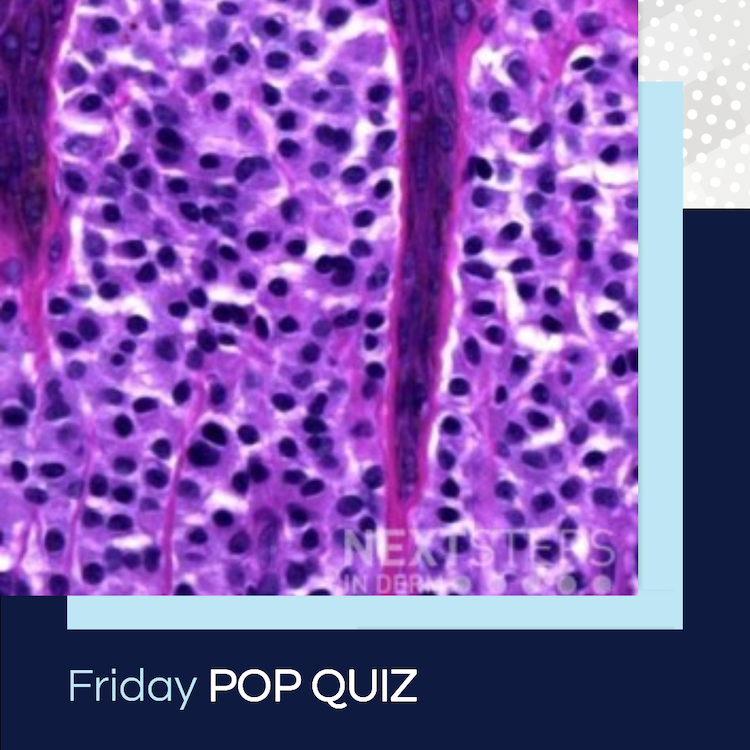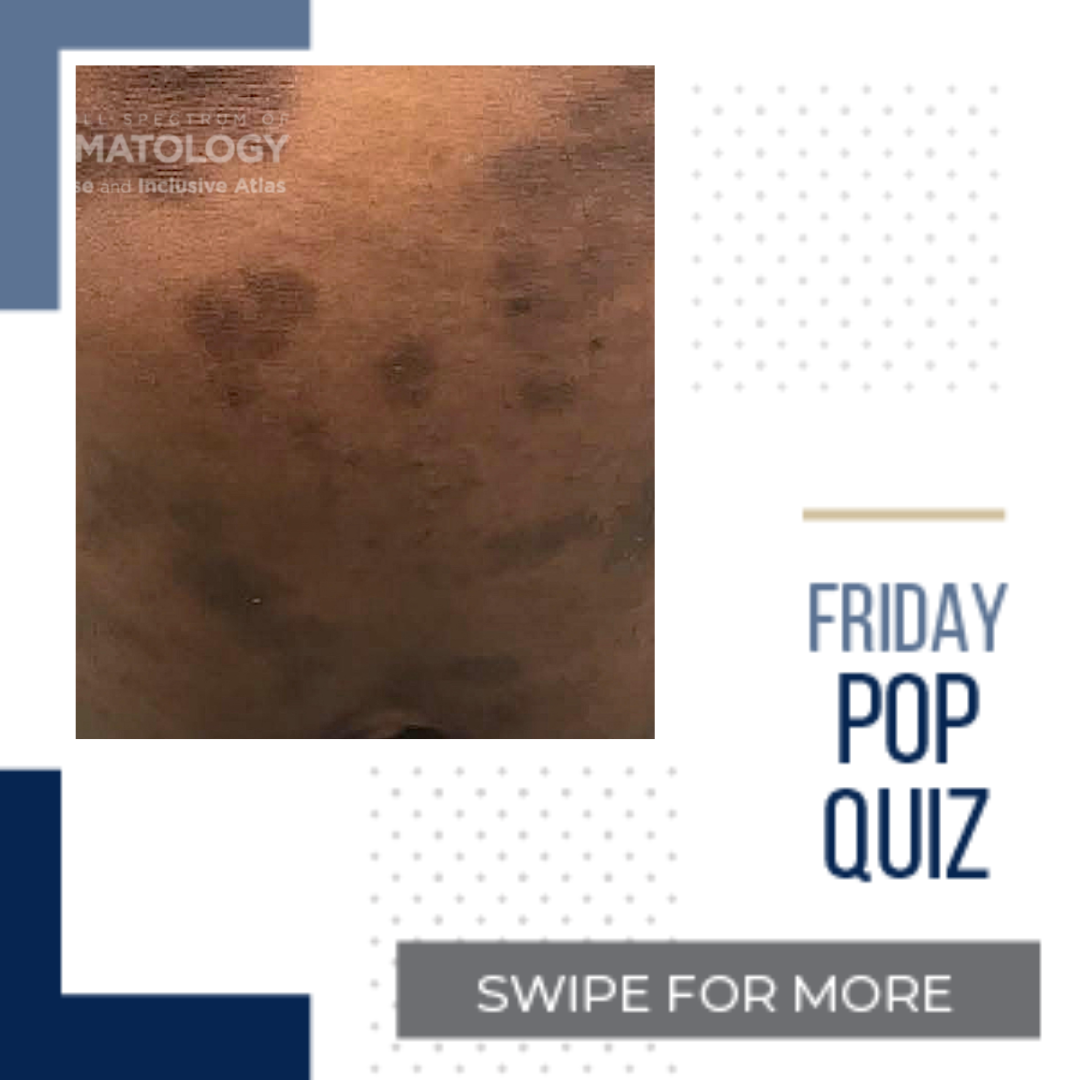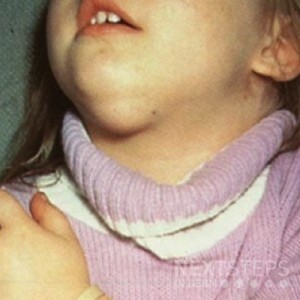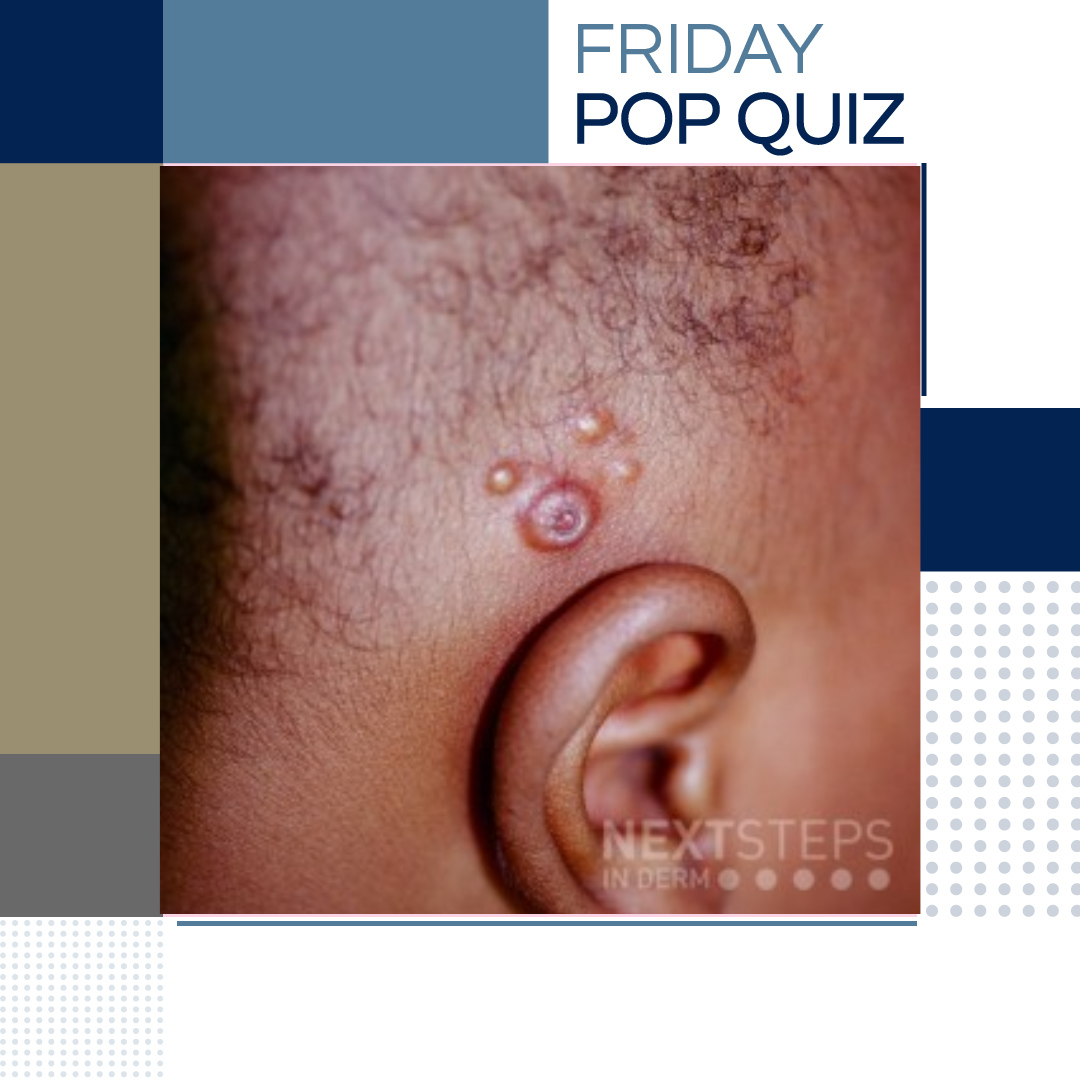Neoplasm – Friday Pop Quiz 4/5/2024
 The neoplasm shown is made of cells that are most likely to contain which of the following substances?
A. Histamine
B. Antibodies
C. Major basic protein
D. Melanin
E. Myeloperoxidases
To find out the correct answer and read the explanation, click here.
…
The neoplasm shown is made of cells that are most likely to contain which of the following substances?
A. Histamine
B. Antibodies
C. Major basic protein
D. Melanin
E. Myeloperoxidases
To find out the correct answer and read the explanation, click here.
…
 The neoplasm shown is made of cells that are most likely to contain which of the following substances?
A. Histamine
B. Antibodies
C. Major basic protein
D. Melanin
E. Myeloperoxidases
To find out the correct answer and read the explanation, click here.
…
The neoplasm shown is made of cells that are most likely to contain which of the following substances?
A. Histamine
B. Antibodies
C. Major basic protein
D. Melanin
E. Myeloperoxidases
To find out the correct answer and read the explanation, click here.
… 

 An increased level of which of the following proteins is most implicated in the pathogenesis of pruritus in the patient’s condition?
A. Defensin
B. Histamine
C. Interleukin-2
D. Interleukin-31
E. Transforming growth factor-beta
To find out the correct answer and read the explanatio …
An increased level of which of the following proteins is most implicated in the pathogenesis of pruritus in the patient’s condition?
A. Defensin
B. Histamine
C. Interleukin-2
D. Interleukin-31
E. Transforming growth factor-beta
To find out the correct answer and read the explanatio …  Which of the following is least likely to be a manifestation of the skin findings shown?
A. Behcet disease
B. Psoriasis
C. Pemphigus foliaceus
D. Drug reaction
E. Sezary syndrome
To find out the correct answer and read the explanation, click here. …
Which of the following is least likely to be a manifestation of the skin findings shown?
A. Behcet disease
B. Psoriasis
C. Pemphigus foliaceus
D. Drug reaction
E. Sezary syndrome
To find out the correct answer and read the explanation, click here. …  What is the most likely cause of the findings shown in the image?
A. Borrellia recurrentis
B. Bartonella quintana
C. Bartonella bacilliformis
D. Borrellia burgdoferi
E. Bartonella henselae
To find out the correct answer and read the explanation, click here. …
What is the most likely cause of the findings shown in the image?
A. Borrellia recurrentis
B. Bartonella quintana
C. Bartonella bacilliformis
D. Borrellia burgdoferi
E. Bartonella henselae
To find out the correct answer and read the explanation, click here. …  Application of a medication used to treat the shown condition is most likely to disrupt the action of which of the following proteins?
A. Cadherin
B. Desmoglein
C. Plectin
D. RNA polymerase
E. Tubulin
To find out the correct answer and read the explanation, click here. …
Application of a medication used to treat the shown condition is most likely to disrupt the action of which of the following proteins?
A. Cadherin
B. Desmoglein
C. Plectin
D. RNA polymerase
E. Tubulin
To find out the correct answer and read the explanation, click here. …